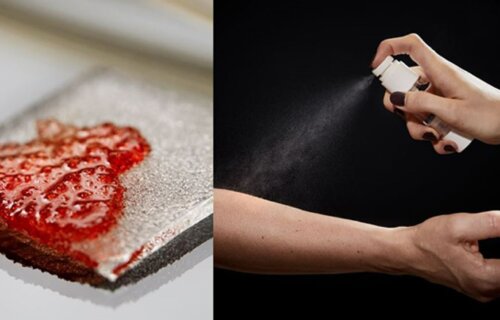GOTHENBURG, Sweden — Scientists with the World Health Organization (WHO) consider antibiotic resistance one of the top ten threats to public health. Although certain strains of bacteria continue build up a tolerance to various medications, researchers from Chalmers University of Technology are developing a new spray that not only works for wound care and other medical practices, but also kills antibiotic-resistant bacteria.
“Our innovation can have a dual impact in the fight against antibiotic resistance. The material has been shown to be effective against many different types of bacteria, including those that are resistant to antibiotics, such as Methicillin-resistant Staphylococcus aureus (MRSA), while also having the potential to prevent infections and thus reduce the need for antibiotics,” says Martin Andersson, head of research for the study and professor at the Department of Chemistry and Chemical Engineering at Chalmers, in a university release.
Currently, estimates show that antibiotic-resistance causes nearly 1.3 million deaths per year around the world. In an effort to mitigate the effects of these bacteria, Chalmers scientists built a material with small hydrogel particles that contain a peptide (a type of protein) capable of binding to and killing harmful bacteria. This attachment allows for particles to provide a protective environment and help keep the peptides stable. Normally, fluids in the body like blood could deactivate these peptides and render them nearly unusable in healthcare. Previously, the team has shown the great potential of this work when it comes to wound care, but now their new studies show that it can reach new heights, and without adverse effects.
“The substance in this wound spray is completely non-toxic and does not affect human cells. Unlike existing bactericidal sprays, it does not inhibit the body’s healing process. The materials, which are simply sprayed onto the wound, can also kill the bacteria in a shorter time,” says study lead author Edvin Blomstrand, an industrial doctoral student at the Department of Chemistry and Chemical Engineering at Chalmers University of Technology.
The spray could reduce the side-effects of using surgical implants
The substance tackles the other huge issue of infection risk, which is very common with surgical implants and catheter insertions into the body. Since these procedures are so common, it’s necessary for antibacterial biomaterials such as materials that treat, replace, or modify organs or other bodily tissues to be readily available. In the hospital setting, urinary catheters, which help patients drain urine from their bladder, are primary sources of infection. The teams’ new project could help reduce the risk and even prevent this.
“Although the catheters are sterile when unpacked, they can become contaminated with bacteria while they are being introduced into the body, which can lead to infection. One major advantage of this coating is that the bacteria are killed as soon as they come into contact with the surface. Another is that it can be applied to existing products that are already used in healthcare, so it is not necessary to produce new ones,” says co-lead author Annija Stepulane, a doctoral student at the Department of Chemistry and Chemical Engineering at Chalmers.
So far, the team has shown that the material can kill 99.9 percent of bacteria and that the ability to kill bacteria can last for 48 hours, allowing for versatile use in clinical settings. The researchers continue to collaborate with others in the world of biotechnology to soon commercialize the product.
The findings are published in the Journal of Pharmaceutics

